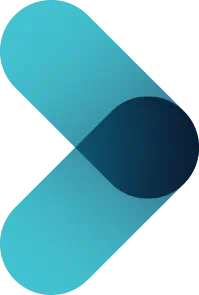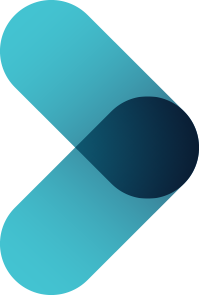GIVE NOW before 2025 ends—your gift will be doubled to help children in need. Click here to 2x your impact!

Ranked nationally in pediatric care.
Arkansas Children's provides right-sized care for your child. U.S. News & World Report has ranked Arkansas Children's in seven specialties for 2025-2026.

It's easier than ever to sign up for MyChart.
Sign up online to quickly and easily manage your child's medical information and connect with us whenever you need.

We're focused on improving child health through exceptional patient care, groundbreaking research, continuing education, and outreach and prevention.

When it comes to your child, every emergency is a big deal.
Our ERs are staffed 24/7 with doctors, nurses and staff who know kids best – all trained to deliver right-sized care for your child in a safe environment.

Arkansas Children's provides right-sized care for your child. U.S. News & World Report has ranked Arkansas Children's in seven specialties for 2025-2026.

Looking for resources for your family?
Find health tips, patient stories, and news you can use to champion children.

Support from the comfort of your home.
Our flu resources and education information help parents and families provide effective care at home.

Children are at the center of everything we do.
We are dedicated to caring for children, allowing us to uniquely shape the landscape of pediatric care in Arkansas.

Transforming discovery to care.
Our researchers are driven by their limitless curiosity to discover new and better ways to make these children better today and healthier tomorrow.

We're focused on improving child health through exceptional patient care, groundbreaking research, continuing education, and outreach and prevention.

Then we're looking for you! Work at a place where you can change lives...including your own.

When you give to Arkansas Children's, you help deliver on our promise of a better today and a healthier tomorrow for the children of Arkansas and beyond

Become a volunteer at Arkansas Children's.
The gift of time is one of the most precious gifts you can give. You can make a difference in the life of a sick child.

Join our Grassroots Organization
Support and participate in this advocacy effort on behalf of Arkansas’ youth and our organization.

Learn How We Transform Discovery to Care
Scientific discoveries lead us to new and better ways to care for children.

Learn How We Transform Discovery to Care
Scientific discoveries lead us to new and better ways to care for children.

Learn How We Transform Discovery to Care
Scientific discoveries lead us to new and better ways to care for children.

Learn How We Transform Discovery to Care
Scientific discoveries lead us to new and better ways to care for children.

Learn How We Transform Discovery to Care
Scientific discoveries lead us to new and better ways to care for children.

Learn How We Transform Discovery to Care
Scientific discoveries lead us to new and better ways to care for children.

When you give to Arkansas Children’s, you help deliver on our promise of a better today and a healthier tomorrow for the children of Arkansas and beyond.

Your volunteer efforts are very important to Arkansas Children's. Consider additional ways to help our patients and families.

Join one of our volunteer groups.
There are many ways to get involved to champion children statewide.

Make a positive impact on children through philanthropy.
The generosity of our supporters allows Arkansas Children's to deliver on our promise of making children better today and a healthier tomorrow.

Read and watch heart-warming, inspirational stories from the patients of Arkansas Children’s.

Hello.

Arkansas Children's Hospital
General Information 501-364-1100
Arkansas Children's Northwest
General Information 479-725-6800

Mic-Key Gastrostomy (G.T.) Button
Your child has had a Gastrostomy (G.T.) Button placed. The Button can be used either short-term or long-term, depending on why it is needed. The Button is used to give fluids, feedings, and medications to those that cannot take them by mouth, and the Button allows for feedings to be given straight into the stomach.
How the GT Button is used
- To give your child supplemental nutrition because your child can eat but cannot get enough nutrition from what they consume by mouth alone.
- To give your child total nutrition because they are completely unable to eat by mouth.
- To decompress (burp) your child's stomach.
Before you leave the hospital, you should be able to answer these questions:
- You can expect a small amount of yellow/clear drainage at the site as it is healing.
- Wash the site at least once a day with soap and water. You should wash the site more than once a day if it is draining, to keep the site clean and dry.
- Do not put alcohol, Hydrogen Peroxide or ointments on the site.
- There should be no need to keep a dressing over the Button. A dressing may cause skin problems at the site.
- 7 days after surgery, the Button site can be underwater during your child's bath.
- If your child has stitches on the Button, these will be removed 7 days after surgery. Start turning the Button once the stitches are removed. If your child does not have stitches on the Button, start turning the Button at least once a day starting the day after surgery.
- 2 weeks after surgery, your child may go swimming with the Button in place.
- Granulation tissue - This is pink/red tissue that may grow around the Button. It will have yellow drainage and may bleed a small amount. If you notice this, call our office and we will schedule a clinic appointment. There are two treatments for granulation tissue:
- (1) Triamcinolone Cream - a low-dose steroid cream.
- (2) Silver Nitrate - which is used to remove the tissue if the steroid cream does not cause it to heal.
- If your child has increased redness, pain or swelling at the site, call our office and ask to speak to the Surgery Specialty Nurse.
- Your child will NOT have to have another surgery to change the Button. It will be changed in Surgery Clinic. The first change is three months after surgery.
PLEASE DO NOT REPLACE THE BUTTON AT HOME BEFORE IT IS FIRST CHANGED IN THE SURGERY CLINIC 3 MONTHS AFTER SURGERY. - Do not use the side port on the MIC Button to deflate or inflate the balloon until you are taught in the Surgery Clinic 3 months after surgery.
- Endovive® buttons are only changed on an as-needed basis.
- When the Button is no longer needed, discuss with the primary care provider about referral for G.T. removal.
- If your child cannot burp by mouth, you may burp (decompress) your child's stomach using the Button. You will need the feeding tube and an En-fit syringe. If your child has an Endovive® button, you will use your decompression tube.
- For babies, always try burping by mouth first.
- If burping by Button, you usually wait until about 20 minutes after feeding.
- If your child acts uncomfortable during a feed: stop the feed, try to burp using the Button, then restart the feeding.
- Lay your child flat or semi-flat.
- Connect the feeding tube (with the En-fit syringe attached) to the Button.
- If your child has air in his/her stomach, you will hear it gurgle out.
- If no air comes out, try rolling your child on his/her side.
- Take the tube out once the air is out (the gurgling sound has stopped).
- If your child's stomach is full of formula, some of the formulae may back up in the tube. If so, allow the stomach contents to go back into the stomach before taking the tube out.
- A bolus feed is when your child is fed a set amount of formula over 15-20 minutes using an En-fit syringe. Your doctor will decide the amount of formula and the times to feed.
- Only formula, water, liquid medication and other liquids should go in the Button.
- The formula should be room temperature.
- Position your child with his/her head elevated.
- Allow the formula to fill the feeding tube to get the air out. Connect the feeding tube to the G.T. Button, then unclamp the feeding tube so the formula will flow into the G.T. Button. Be sure to line up the black line on the feeding tube and the Button before connecting.
- The rate that the formula goes into the Button is controlled by how high you hold the syringe and tube. The higher you hold them, the faster the formula goes in, and the lower you hold the syringe, the slower the rate.
- Bolus feedings should go in over about 15-20 minutes. Feedings that are given too fast can cause abdominal pain, abdominal cramping, vomiting or gagging.
- When the formula is almost finished, flush the G.T. Button with 5 ml of water (water from the tap is fine). Do not let all the formula run out before adding water or air will get in your child's stomach and cause gas.
- When the water is almost gone, disconnect the feeding tube and close the flap on the Button.
- A continuous feed is when your child is fed a set amount over several hours. A continuous feed is done using a feeding pump and the feeding tube.
- A referral will be made to a supplier for a feeding pump.
- The supplier will teach you how to use the feeding pump.
- You will be told the rate (how fast) to set the pump and for how long to leave your child connected to the pump before you are discharged home.
- If your child cannot burp by mouth, you may burp (decompress) your child's stomach using the Button. You will need the feeding tube and an En-fit syringe. If your child has an Endovive® button, you will use your decompression tube.
- For babies, always try burping by mouth first.
- If burping by Button, you usually wait until about 20 minutes after feeding.
- If your child acts uncomfortable during a feed: stop the feed, try to burp using the Button, then restart the feeding.
- Lay your child flat or semi-flat.
- Connect the feeding tube (with the En-fit syringe attached) to the Button.
- If your child has air in his/her stomach, you will hear it gurgle out.
- If no air comes out, try rolling your child on his/her side.
- Take the tube out once the air is out (the gurgling sound has stopped).
- If your child's stomach is full of formula, some of the formulae may back up in the tube. If so, allow the stomach contents to go back into the stomach before taking the tube out.
- If this happens before the first change in the Surgery Clinic and during business hours, call 501-364-4852. Before the first change and after business hours, you must come to the Emergency Room at Arkansas Children's Hospital.
- DO NOT put the Button back in. Insert the 8FR feeding tube provided in the hospital, as instructed, and come to the Emergency Room. DO NOT feed your child.
- If you go to a local Emergency Room and they replace the Button in the first 12 weeks after surgery, they MUST get an x-ray study to confirm placement before you can feed your child.
- The first change will be done in our clinic, three months after the Button was placed in surgery. Changing the Button at home before it has been in place for three months (12 weeks) is not safe for your child and may result in your child getting very sick and requiring another surgery.


Contact Information
Monday - Friday
Hours: 8:00 a.m. - 4:30 p.m.
Phone: 501-364-4852
After 4:30 p.m. call 501-364-1100 and ask for the surgeon on call.

